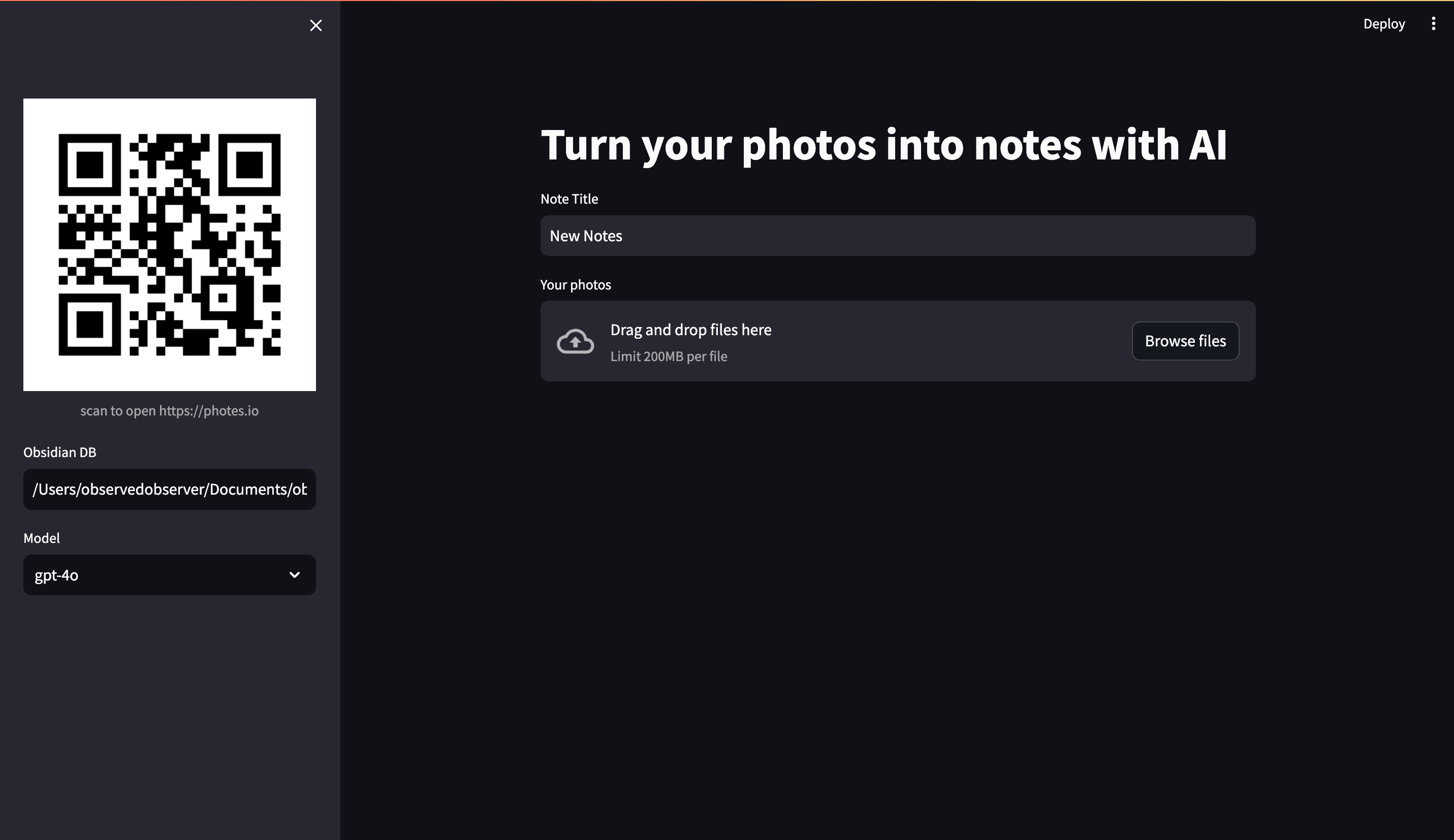From demo to SaaS - The Photes.io Story
If you are not familiar with photes.io (opens in a new tab), here’s a quick background: photes.io is an AI note-taking app that turns your photos and screenshots into text notes. It uses vision LLMs, like GPT-4 or Claude 3.5, to understand images deeply. Before photes.io, people usually had to take notes themselves or forgot about valuable information in their photos.
The Need for a New Tool
I often attend conferences with great talks. I used to take notes in Notion and snap photos of information-heavy slides. That’s when I wished for a tool to bring my photos directly into Notion and generate notes.
Building the Idea
When OpenAI launched its vision capability, I realized it was time to build this, as I already had the necessary components.
However, it seemed like complex software, requiring extensive coding. I wanted a lightweight solution that I could build quickly to share with friends for feedback.
Streamlit and Simplifying the Process
Luckily, there is a Python framework called Streamlit that allows prototyping without complex coding. I can handle all the coding in Python without needing to build both frontend and backend systems.
The Notion API is sometimes time-consuming, so I decided to use Obsidian, which uses markdown files on the local disk.
Leveraging Lab2.dev
Coding in Streamlit with AI features and local file operations was challenging. So I used lab2.dev (opens in a new tab) to help me bootstrap a Streamlit app with plain English. I just described my needs to lab2.dev, and it generated the Streamlit app for me. After some tweaks and iterations, I had a very impressive prototype.
Open Source and Community Feedback
I decided to open source it to see if others were interested. If so, I planned to invest more time and resources into a server-side SaaS version, which could support more note apps like Notion and Google Docs.
A few days after sharing the open source repo (opens in a new tab) with the community, it received over 40 stars, which I saw as enough evidence to proceed.
Future Directions
An interesting question was whether to keep it open source. The prototype is simple and can attract early adopters who know coding and can set it up locally. But to meet more users’ needs, it would become a much more complex system with frontend, backend, and databases. As a SaaS, open sourcing might not attract end users. Even if some users understand system deployment, the lite version is easier and cheaper for personal use.
Ultimately, transitioning to a SaaS model means making it more commercial to gather feedback and resources for improvement, allowing it to reach a wider audience. With these considerations in mind, photes.io (opens in a new tab) was officially launched, ready to transform the way people take notes.
